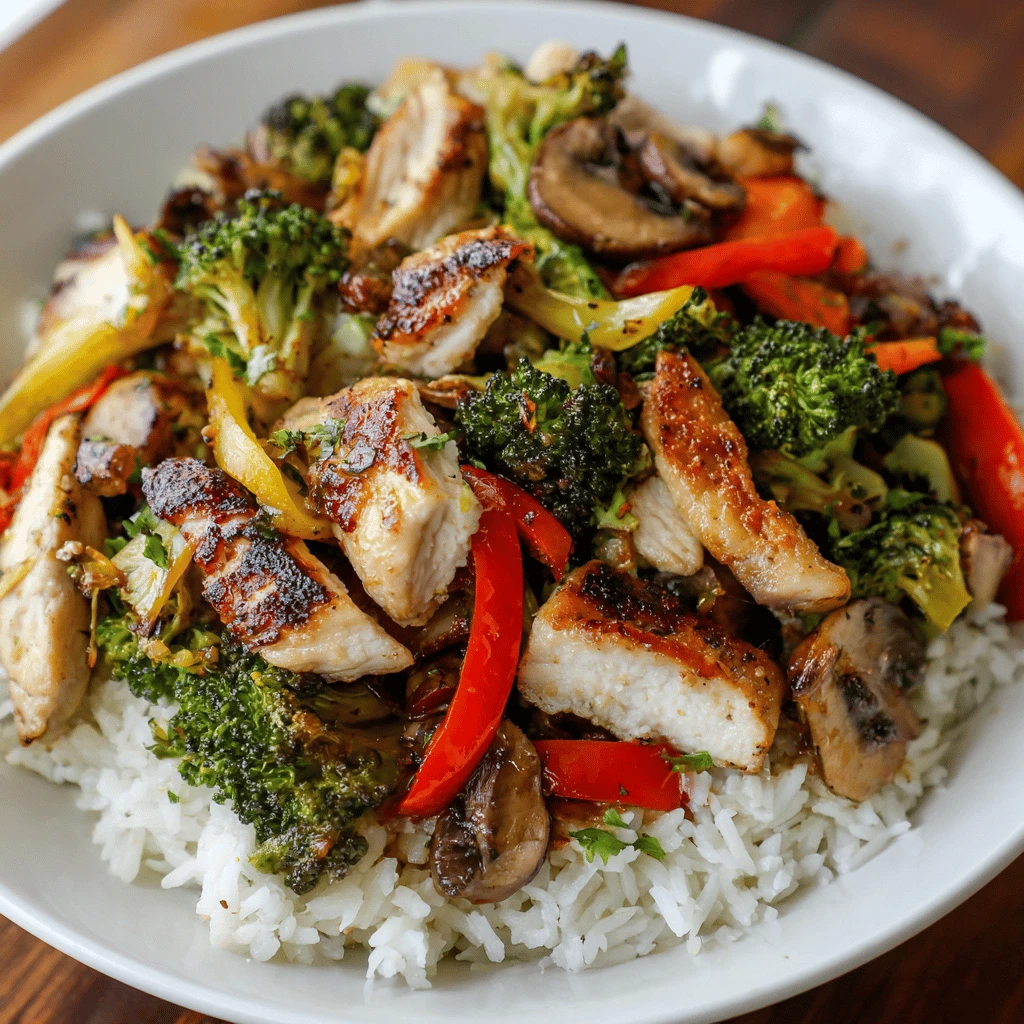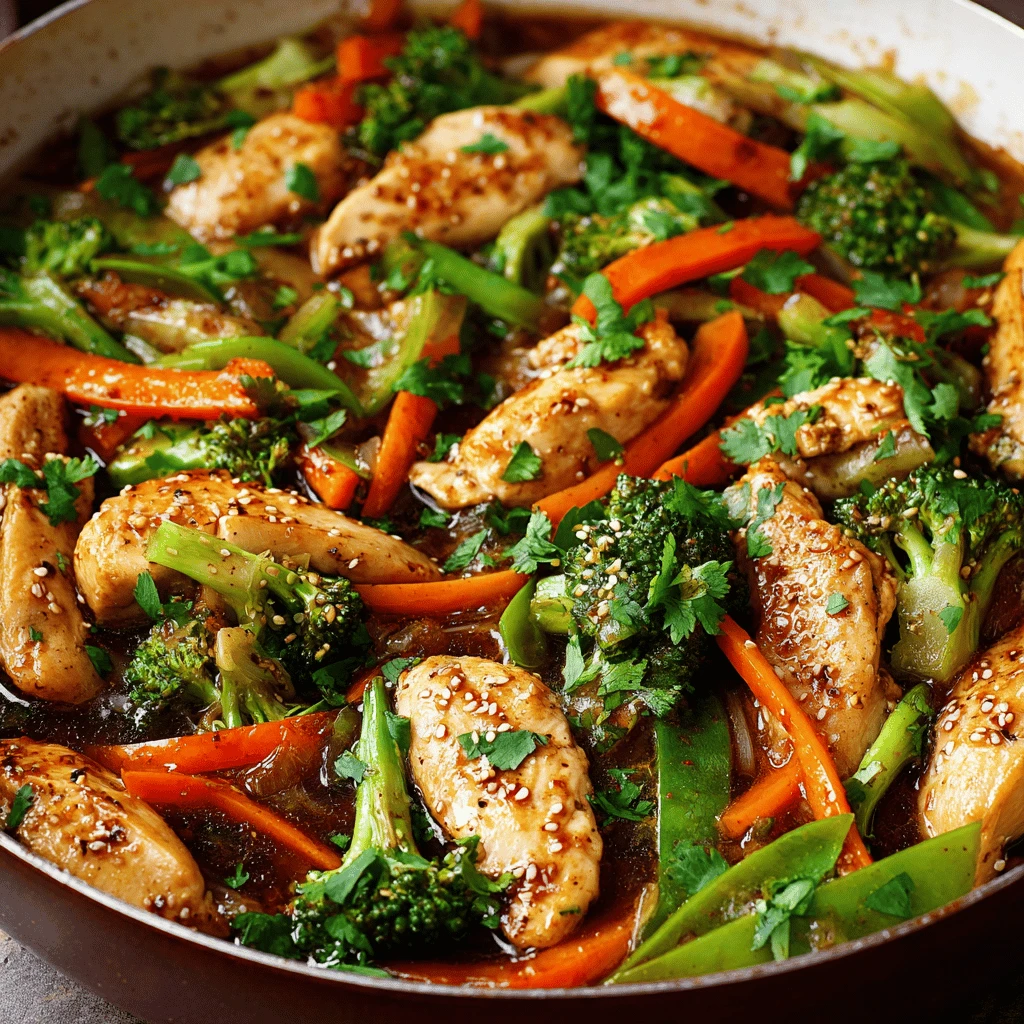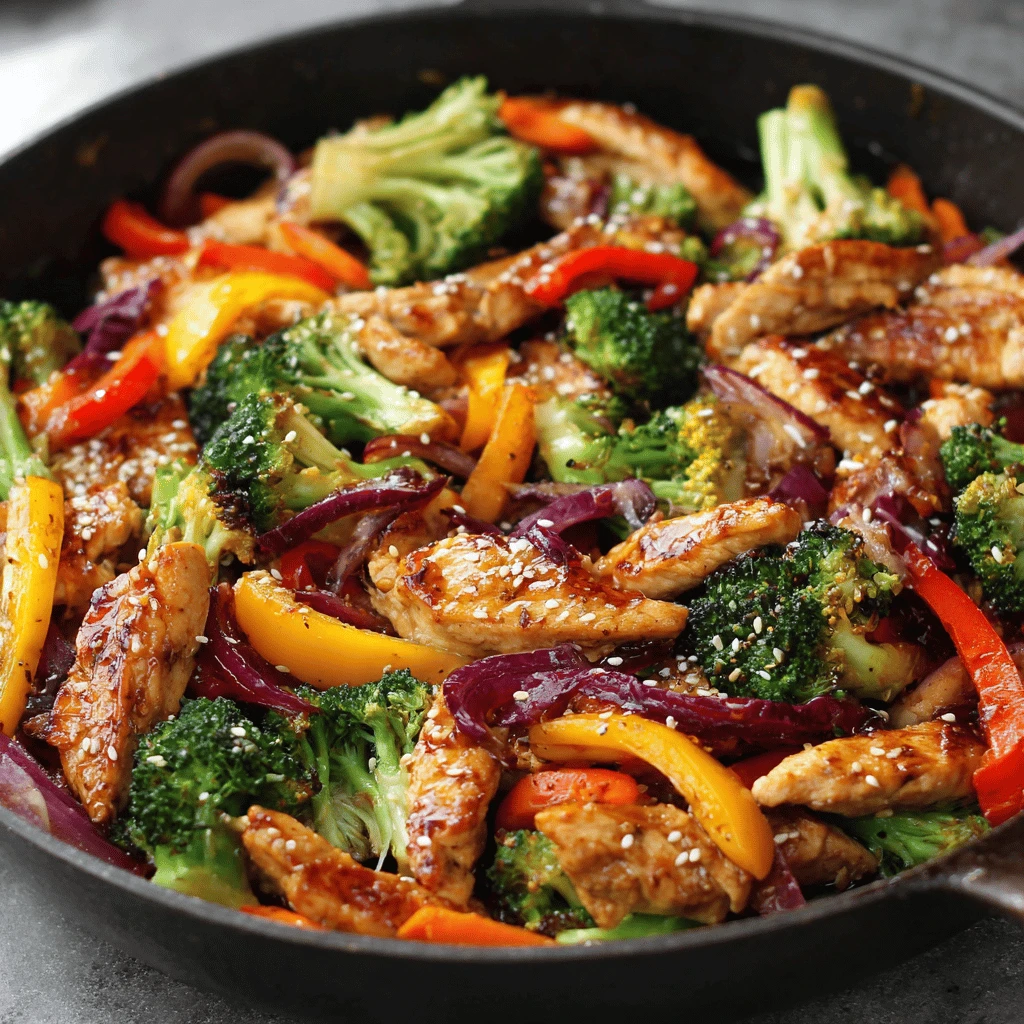Family-Friendly Pan-Seared Chicken Breast Stir Fry
Stir-fry is a weeknight champion – quick, versatile, and a guaranteed way to get a healthy dose of vegetables onto the family dinner table. This recipe for Family-Friendly Pan-Seared Chicken Breast Stir Fry takes the classic stir-fry and elevates it with perfectly pan-seared chicken, ensuring tender, juicy protein that even the pickiest eaters will love. Ditch the takeout menu and embrace this flavorful, healthy, and easy-to-make dish.
The Secret to Perfect Pan-Seared Chicken
The key to a truly delicious chicken stir-fry lies in the preparation of the chicken itself. Soggy, bland chicken is a stir-fry killer, but with a few simple techniques, you can achieve restaurant-quality results at home.
Choosing the Right Chicken
Boneless, skinless chicken breasts are the ideal choice for this recipe. Their uniform thickness allows for even cooking, and they’re readily available at most grocery stores. Opt for chicken breasts that are of similar size and thickness to ensure they cook at the same rate. If your chicken breasts are particularly thick, consider butterflying them (slicing them horizontally to create two thinner cutlets) or pounding them to an even thickness. This will not only speed up the cooking process but also prevent the outside from becoming dry before the inside is cooked through.
Preparing the Chicken for Success
Before you even think about turning on the heat, there are a few crucial steps to take. First, pat the chicken breasts dry with paper towels. This removes excess moisture, which is essential for achieving a beautiful sear. Next, season the chicken generously with salt, pepper, and any other desired spices. Garlic powder, onion powder, paprika, and a touch of chili flake are all excellent additions. Consider marinating the chicken for at least 30 minutes, or even overnight, for maximum flavor. A simple marinade of soy sauce, ginger, garlic, and a touch of honey will transform the chicken into a flavor bomb.
Mastering the Pan-Sear
The secret to a perfect pan-sear is high heat and a preheated pan. Choose a large skillet or wok with a heavy bottom. Cast iron is an excellent option, as it distributes heat evenly and retains it well. Add a high-heat cooking oil, such as canola, vegetable, or peanut oil, to the pan and heat it over medium-high heat until it shimmers and is almost smoking. Carefully add the chicken breasts to the hot pan, ensuring they are not overcrowded. Overcrowding will lower the temperature of the pan and result in steamed, rather than seared, chicken. Allow the chicken to cook undisturbed for 4-5 minutes per side, or until it is golden brown and cooked through. Use a meat thermometer to ensure the internal temperature reaches 165°F (74°C). Once cooked, remove the chicken from the pan and set it aside to rest before slicing. This will allow the juices to redistribute, resulting in more tender and flavorful chicken.
Building the Perfect Stir-Fry
Now that you’ve mastered the art of pan-searing chicken, it’s time to build the perfect stir-fry. The key here is to have all of your ingredients prepped and ready to go before you start cooking, as the stir-fry process happens quickly.
Choosing Your Vegetables
The beauty of stir-fry is its versatility. You can use virtually any vegetable you have on hand, making it a great way to use up leftover produce. Some popular choices include broccoli florets, sliced bell peppers (red, yellow, or orange), sliced carrots, snow peas, snap peas, mushrooms, onions, and zucchini. Consider the cooking time of each vegetable when deciding which ones to include. Vegetables that take longer to cook, such as broccoli and carrots, should be added to the pan first. Softer vegetables, such as zucchini and mushrooms, can be added later in the cooking process. Don’t be afraid to experiment with different combinations to find your favorite.
Crafting the Stir-Fry Sauce
The stir-fry sauce is what ties everything together, adding flavor and moisture to the dish. A classic stir-fry sauce typically includes soy sauce, a sweetener (such as honey, maple syrup, or brown sugar), an acid (such as rice vinegar or lemon juice), and a thickener (such as cornstarch or arrowroot powder). You can also add other flavor enhancers, such as garlic, ginger, chili paste, or sesame oil. Taste the sauce and adjust the ingredients as needed to achieve the perfect balance of sweet, savory, and tangy.
The Stir-Fry Process
With your chicken cooked, vegetables prepped, and sauce ready, it’s time to assemble the stir-fry. Heat a tablespoon of oil in the same skillet or wok that you used to cook the chicken. Add the vegetables that take longer to cook first, such as broccoli and carrots, and stir-fry for a few minutes until they begin to soften. Add the remaining vegetables and stir-fry for another few minutes, until they are tender-crisp. Pour the stir-fry sauce over the vegetables and bring to a simmer. Cook for a minute or two, until the sauce thickens slightly. Slice the pan-seared chicken breasts and add them to the stir-fry. Toss to combine, ensuring the chicken is coated in the sauce.
Making it Family-Friendly
While stir-fry is generally a healthy and nutritious meal, there are a few things you can do to make it even more appealing to children.
Mild Flavors
When cooking for children, it’s best to keep the flavors relatively mild. Avoid using too much spice or chili paste. If your children are sensitive to strong flavors, you may want to reduce the amount of garlic or ginger in the sauce. You can always add more spice to your own portion later.
Bite-Sized Pieces
Cut the chicken and vegetables into small, bite-sized pieces. This makes it easier for children to eat and less intimidating. You can also use fun shapes to make the stir-fry more visually appealing.
Sneaking in Veggies
Stir-fry is a great way to sneak in extra vegetables that your children might not normally eat. Finely chop vegetables like carrots, zucchini, or bell peppers and add them to the stir-fry. They will cook down and blend in with the other ingredients, making them less noticeable.
Serving Suggestions
Serve the stir-fry over rice or noodles. Brown rice or whole-wheat noodles are healthier options than white rice or refined noodles. You can also serve the stir-fry with a side of steamed broccoli or edamame. For a fun and interactive meal, set up a “stir-fry bar” and let your children choose their own vegetables and toppings.
Variations and Adaptations
One of the best things about stir-fry is its adaptability. You can easily customize this recipe to suit your dietary needs and preferences.
Gluten-Free
To make this recipe gluten-free, use tamari instead of soy sauce and ensure that your cornstarch or arrowroot powder is certified gluten-free. You can also use gluten-free noodles or serve the stir-fry over rice.
Vegetarian/Vegan
To make this recipe vegetarian or vegan, substitute the chicken with tofu, tempeh, or plant-based chicken alternatives. You can also add more vegetables, such as mushrooms, bean sprouts, or water chestnuts. Ensure that your stir-fry sauce is vegan-friendly by using maple syrup or agave nectar instead of honey.
Low-Carb/Keto
To make this recipe low-carb or keto-friendly, omit the rice or noodles and use cauliflower rice instead. You can also reduce the amount of sweetener in the sauce or use a sugar-free alternative, such as erythritol or stevia. Focus on using low-carb vegetables, such as broccoli, cauliflower, and spinach.
Spice Level
Adjust the amount of chili paste or chili flakes to control the spice level. For a milder stir-fry, omit the chili altogether. For a spicier stir-fry, add more chili paste or chili flakes, or use a spicier variety of chili paste.
Frequently Asked Questions
-
- Can I use frozen vegetables in this stir-fry?
Yes, you can use frozen vegetables. However, keep in mind that frozen vegetables tend to release more water than fresh vegetables, so you may need to cook them for a longer time to evaporate the excess moisture.
-
- Can I make this stir-fry ahead of time?
While it's best enjoyed fresh, you can prepare the individual components of the stir-fry ahead of time. Cook the chicken, chop the vegetables, and prepare the sauce. Store everything separately in the refrigerator and then combine them just before serving.
-
- How do I store leftover stir-fry?
Store leftover stir-fry in an airtight container in the refrigerator for up to 3 days. Reheat it in a skillet or microwave until heated through.
-
- What other protein can I use besides chicken?
You can use other proteins like shrimp, beef, pork, or tofu. Adjust the cooking time accordingly based on the protein you choose.
-
- What kind of noodles are best for stir-fry?
Lo mein noodles, egg noodles, rice noodles, and soba noodles are all great options for stir-fry. Choose your favorite based on your personal preference and dietary needs.




